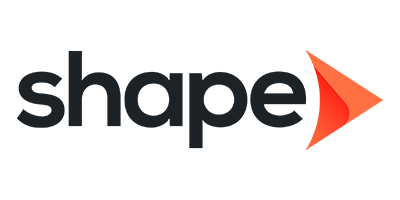Choosing the right CRM can define how efficiently a business operates, communicates, and grows. Two popular platforms — Shape CRM and HubSpot CRM — often appear side by side in conversations about marketing automation, lead management, and integration.
While both systems help companies organize data, automate tasks, and scale communication, they serve fundamentally different purposes.
At Proven ROI, we have worked extensively with both systems and integrated them across multiple industries, including mortgage, financial services, and home improvement. This experience gives us a clear view of how these platforms compare, where they overlap, and where one clearly outperforms the other.
Overview of Shape CRM
Shape CRM is an all-in-one sales, marketing, and management platform designed primarily for lenders, brokers, and financial professionals.
Its features include:
- Loan and deal tracking tailored for mortgage operations
- Lead distribution and sales automation
- Email and text campaign tools
- Customizable workflows and templates
- Integrated dialer and texting system
Shape is purpose-built for industries that require deep lead management, borrower tracking, and communication automation. Its strength lies in vertical specialization — particularly for mortgage and lending teams that need to move leads through a structured process quickly.
Overview of HubSpot CRM
HubSpot CRM is a global marketing, sales, and service platform designed to unify all aspects of business communication.
Its features include:
- Marketing automation and campaign management
- Sales pipelines and deal forecasting
- Service ticketing and customer support tools
- Advanced reporting and dashboards
- Powerful integrations with thousands of third-party applications
HubSpot’s strength lies in scalability and customization. It supports businesses in nearly every industry and connects marketing, sales, and customer service into one ecosystem.
At Proven ROI, HubSpot often serves as the central platform for connecting CRMs, marketing systems, and operational tools such as ServiceTitan, Salesforce, or Encompass.
Key Differences Between Shape and HubSpot
While both systems can help manage leads and automate communication, the differences become clear when looking at functionality, flexibility, and ecosystem support.
1. Target Audience
- Shape CRM: Built primarily for lenders, brokers, and financial professionals.
- HubSpot CRM: Designed for businesses across all industries, from startups to enterprise organizations.
If your organization operates outside of the lending or finance sector, HubSpot provides broader adaptability and long-term scalability.
2. System Flexibility and Integration
- Shape CRM: Offers some integrations with lending software and marketing tools but is relatively closed compared to HubSpot’s open API model.
- HubSpot CRM: Features one of the most flexible integration ecosystems in the world. Proven ROI regularly connects HubSpot with platforms like ServiceTitan, Encompass, Salesforce, and Zapier to create unified data systems.
If your business relies on multiple systems or custom workflows, HubSpot’s flexibility allows you to build the connected environment you need.
3. Marketing Automation
- Shape CRM: Provides built-in automation for emails, SMS, and task reminders focused on the sales cycle.
- HubSpot CRM: Offers full-funnel marketing automation, including campaign creation, lead scoring, content tracking, and ROI attribution across every channel.
HubSpot gives marketing teams more advanced control over campaign management, audience segmentation, and analytics.
4. Reporting and Analytics
- Shape CRM: Includes standard sales reports and loan tracking dashboards.
- HubSpot CRM: Delivers advanced analytics for marketing performance, deal forecasting, and attribution.
HubSpot’s dashboards allow executives and marketers to measure revenue, campaign ROI, and pipeline health in real time — providing a complete picture of performance.
5. Customization and Scalability
- Shape CRM: Focused customization options around lending workflows and lead routing.
- HubSpot CRM: Fully customizable pipelines, properties, and reports that scale as the organization grows.
For businesses planning long-term growth, HubSpot’s scalability and modular structure make it easier to adapt to evolving needs.
6. User Experience
- Shape CRM: Functional but limited by design templates and industry focus.
- HubSpot CRM: Modern, intuitive, and consistent across marketing, sales, and service tools.
HubSpot’s interface encourages adoption and collaboration across departments, reducing onboarding time and improving productivity.
Which Platform Performs Better for Your Business?
The answer depends on your priorities.
- Choose Shape CRM if your business operates strictly in mortgage, lending, or financial services and requires a system tailored for lead distribution and borrower tracking.
- Choose HubSpot CRM if your business values flexibility, marketing depth, and scalability across departments.
For many organizations, the best approach is a hybrid strategy — integrating Shape CRM for specialized workflows with HubSpot for marketing automation and reporting. Proven ROI has implemented this exact solution for clients who wanted both industry-specific functionality and enterprise-level marketing intelligence.
The Proven ROI Advantage
Proven ROI works with both systems, but our clients often choose HubSpot as their operational hub because it allows seamless integration, advanced analytics, and unified visibility across the business.
We help organizations:
- Connect Shape CRM and HubSpot to unify borrower and marketing data
- Build pipelines that reflect real-time sales and loan activity
- Create dashboards that attribute revenue directly to campaigns
- Automate reporting and communication for both marketing and lending teams
Whether your team runs on Shape, HubSpot, or both, Proven ROI ensures your data tells one clear story — how marketing and operations drive measurable return on investment.
Key Takeaways
- Shape CRM is best suited for lenders and mortgage professionals who need deep borrower management.
- HubSpot CRM is ideal for businesses that want full marketing automation and enterprise scalability.
- Proven ROI integrates both systems to deliver unified visibility and performance tracking.
- HubSpot’s open ecosystem makes it the superior choice for companies seeking flexibility and growth.
- The right CRM strategy depends on your goals, data complexity, and long-term vision for integration.
FAQ
1. Can Shape CRM integrate with HubSpot?
Yes. Proven ROI can build a custom integration between Shape and HubSpot to synchronize leads, contacts, and deal data.
2. Which CRM is more cost-effective?
Shape offers lower upfront pricing, but HubSpot provides greater long-term value through scalability and automation.
3. Does HubSpot support mortgage and lending workflows?
Yes. Proven ROI customizes HubSpot to manage borrower pipelines, automate communication, and integrate with loan origination systems.
4. Which platform provides better reporting?
HubSpot offers more advanced dashboards, analytics, and attribution reporting for both marketing and sales.
5. How can Proven ROI help my business decide?
We assess your current systems, identify integration opportunities, and design a data strategy that supports measurable growth.
Human Strategy. Intelligent Systems. Proven ROI.
We help you connect, compare, and optimize the systems that drive your business forward.

















